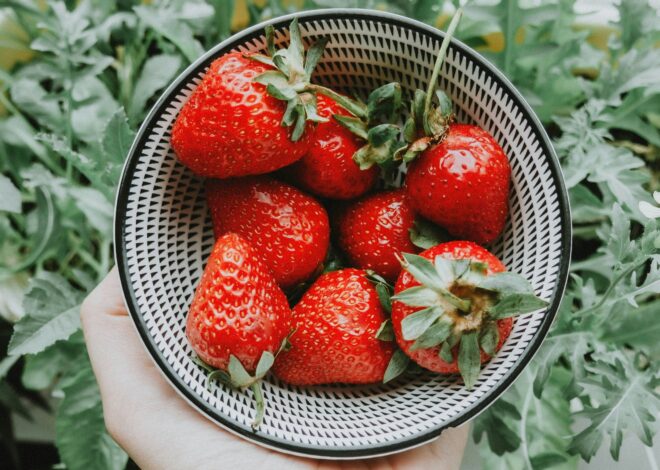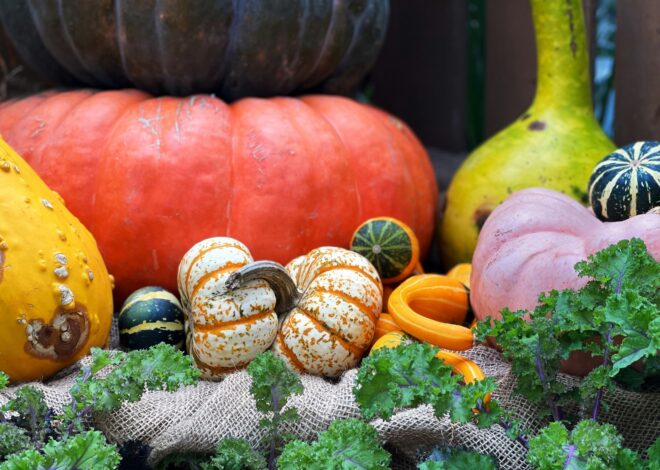
How To Grow Red Peppers Indoors
Welcome to our complete guide on how to grow red peppers. Are you dreaming of vibrant red bell peppers fresh from your own indoor garden? Growing red peppers indoors is not just a rewarding hobby; it’s also a fantastic way to enhance your cooking with homegrown flavors.
Imagine snipping off a few ripe, juicy peppers straight from the plant and adding them to your favorite dishes. Whether you’re short on outdoor space or simply want to enjoy gardening year-round, cultivating these fiery fruits inside can be both fun and fulfilling.
Let’s dive into the essentials of how to grow red peppers indoors and turn that dream into reality!
Benefits of Growing Red Peppers Indoors
Growing red peppers indoors offers a delightful array of benefits. First, you gain the ability to enjoy fresh produce year-round. There’s nothing quite like plucking a ripe pepper from your very own plant. Indoor gardening also saves you money on groceries.
With just a few seeds and some care, you can have an abundance of peppers without the hefty price tag found at the store. Moreover, cultivating plants indoors enhances air quality. As your pepper plants grow, they help filter toxins and release oxygen into your living space.
The process itself is therapeutic too. Tending to plants can reduce stress levels and boost overall well-being. Watching them thrive is incredibly rewarding. Plus, growing red peppers allows for experimentation with different varieties that may not be available locally. You might discover unique flavors or colors that elevate your culinary creations!
Necessary Supplies for Indoor Pepper Gardening
To get started with indoor pepper gardening, gather a few essential supplies. First, you’ll need seed packets of your desired red pepper variety. Look for seeds that suit your taste and climate. Next, choose high-quality potting soil.
A mix designed for vegetables works best, ensuring good drainage and nutrients. Containers are crucial too. Opt for pots with drainage holes to prevent waterlogging. Consider sizes around 5-10 inches deep; they provide ample space for root growth. Don’t forget about labels! They help keep track of different varieties as they sprout.
Invest in grow lights if natural sunlight is limited in your space. Quality lighting significantly impacts the growth rate and overall health of your plants. With these supplies ready, you’re on the path to growing vibrant red peppers indoors!
Choosing the Right Container and Soil for Red Peppers
Selecting the appropriate container is crucial for growing red peppers indoors. Opt for pots that are at least 5 to 7 gallons in size. This gives the roots ample room to spread out and absorb nutrients effectively. Drainage holes are a must. They prevent water from pooling, which can lead to root rot.
Consider using plastic or ceramic pots; both provide good insulation against temperature fluctuations. Next, focus on soil quality. A well-draining potting mix enriched with organic matter works wonders. Look for combinations containing peat moss, vermiculite, or perlite, as they enhance aeration and moisture retention.
Avoid garden soil; it can become compacted and may harbor pests or diseases not suitable for indoor gardening. Mixing in compost can also boost nutrient content—perfect for healthy pepper plants thriving year-round!
The Importance of Proper Lighting and Temperature
Proper lighting is crucial when growing red peppers indoors. These vibrant plants thrive under bright, direct light, mimicking their natural outdoor conditions. Aim for at least 12 to 16 hours of light each day. Using grow lights can help achieve this if your windows don’t provide enough sunlight.
Temperature also plays a significant role in the growth process. Red pepper plants prefer warm environments, ideally between 70°F and 85°F during the day. Nighttime temperatures should not drop below 60°F. Too much heat can stress the plant while too little may stunt its growth or even kill it.
Use thermometers to monitor these conditions closely and adjust as needed. Placing them near a south-facing window or using supplemental grow lights can create an ideal environment for healthy development, ensuring you enjoy a bountiful harvest of delicious red peppers later on!
Planting and Caring for Red Pepper Seeds
Planting red pepper seeds is the exciting first step in your indoor gardening journey. Start by filling your containers with a high-quality seed-starting mix. This provides the perfect environment for germination. Sow the seeds about a quarter-inch deep, ensuring they have enough space to grow.
It’s important to keep them moist but not waterlogged, so check regularly. A gentle spray of water can help maintain humidity without overwhelming the soil. Once planted, cover your pots with plastic wrap or a clear lid to create a mini greenhouse effect. Place them in a warm area where temperatures hover between 70-85°F (21-29°C) for optimal germination.
After about two weeks, you should see tiny sprouts breaking through. Remove any coverings and gradually acclimate them to brighter light conditions as they grow stronger. Regular monitoring ensures that these young seedlings thrive as you nurture their development into robust plants!
Providing Optimal Growing Conditions
To thrive, red pepper plants need specific growing conditions. Start by ensuring they receive ample light. Aim for at least 12 to 16 hours of bright, direct sunlight daily. If natural light is limited, consider using grow lights to mimic the sun’s rays effectively. Temperature plays a crucial role too.
Red peppers prefer warmth, ideally between 70°F and 85°F during the day and slightly cooler at night. Avoid drafts or sudden temperature changes that could shock your plants. Humidity levels are equally important. Indoor air can be dry, especially in winter months.
Maintaining humidity around 40-60% will help your peppers flourish. You might use a humidifier or place a tray of water nearby to increase moisture in the air. Ensure good airflow around your plants to prevent mold and encourage healthy growth. Proper ventilation helps control both temperature and humidity levels while minimizing pests’ chances of settling in.
Watering and Fertilizing Tips for Indoor Pepper Plants
Watering your indoor red pepper plants requires a delicate balance. They thrive in moist but not soggy soil. Check the top inch of the soil; if it’s dry, it’s time to water. Use room temperature water to avoid shocking the roots.
Water thoroughly until it drains from the bottom, ensuring all parts of the root system receive moisture. Fertilization is equally important for robust growth. Opt for a balanced fertilizer specifically designed for vegetables or peppers. A 5-10-10 ratio works wonders.
Apply fertilizer every four to six weeks during their growing season. Dilute it according to package instructions and apply after watering to prevent root burn. During fruit development, consider switching to a higher phosphorus formula to encourage vibrant red peppers. Always monitor your plants’ response and adjust accordingly—healthy foliage is key!
Common Pests and Diseases to Watch Out For
Indoor gardeners should be vigilant about pests that can disrupt the growth of red peppers. Aphids are small, soft-bodied insects that love to feed on young leaves. They can quickly multiply and damage your plant if not addressed. Spider mites are another common threat.
These tiny arachnids thrive in dry conditions and create fine webs on the undersides of leaves. Check for yellow spots or a dusty appearance as signs of their presence. Fungal diseases like powdery mildew can also occur, especially in humid environments. Keep an eye out for white, powdery spots on leaves, which indicates an infection.
Regular monitoring is key to maintaining healthy plants. A simple spray of insecticidal soap or neem oil can help manage these pests effectively without harsh chemicals. Keeping your environment clean reduces the risk of infestations too.
Harvesting and Preserving Your Red Peppers
Harvesting red peppers is a rewarding experience. You’ll know they’re ready when their color deepens to a vibrant red and they feel firm to the touch. Use sharp scissors or pruning shears for a clean cut, taking care not to damage the plant. Once harvested, it’s essential to preserve your peppers properly.
You can store them in the refrigerator for up to two weeks in a breathable bag. For longer preservation, consider freezing them. Simply wash, chop, and spread out on a baking sheet before transferring them into freezer bags. Another option is drying your peppers.
Air-drying works well but you can also use an oven at low heat or a dehydrator for quicker results. Whether fresh, frozen, or dried, homegrown red peppers add flavor and nutrition to your meals all year round without losing their charm!
Troubleshooting Common Issues
When growing red peppers indoors, you may encounter a few hiccups along the way. One common issue is the leaves turning yellow. This often signals overwatering or nutrient deficiency. Check your watering schedule and consider adding a balanced fertilizer.
Pests can also become unwelcome guests. Aphids and spider mites are frequent offenders in indoor gardens. Inspect your plants regularly and use insecticidal soap if necessary to keep them at bay. Another challenge might be stunted growth or poor fruit production.
Ensure that your pepper plants receive adequate light—at least 14-16 hours of bright light daily is optimal for healthy development. If blossoms drop prematurely, it could be due to temperature fluctuations or inadequate humidity levels.
Aim for consistent warmth around 70-80°F during the day and maintain moisture in the air with regular misting or using a humidifier. Understanding these issues equips you to troubleshoot effectively as you nurture your indoor garden.
Conclusion: Enjoy Your Homegrown Red Peppers!
Growing red peppers indoors is a rewarding endeavor that brings vibrant colors and flavors right to your kitchen. With the right supplies, container, soil, lighting, and care, you can cultivate a thriving indoor garden. Regular maintenance such as proper watering and fertilizing will keep your plants healthy.
Staying vigilant against common pests ensures a bountiful harvest. Once it’s time to pick those luscious red peppers, you’ll savor the satisfaction of enjoying something you’ve nurtured from seed to table. Embrace this journey in indoor gardening and relish the taste of fresh homegrown produce!



